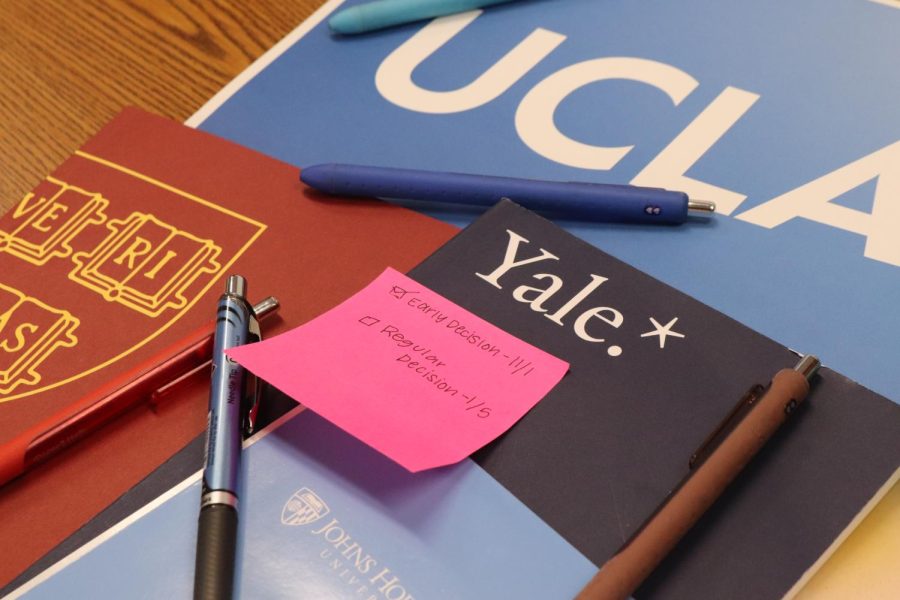Early decision is not just another box to check
Colleges around the United States offer several deadlines to choose from: some are binding, offer earlier admission into a school or grant a student access to special programs or scholarships. The Sidekick staff writer Shrayes Gunna explores one of these various deadlines, early decision, and highlights the pros and cons of this route.
September 8, 2022
The college application process is an amalgamation of decisions: difficult decision after difficult decision, each just as pressing as the last. Whether the choice be what admission deadline to apply or the outright admissions’ decision, navigating the various choices—no matter who makes it—is troublesome.
And when so much is out of your control in the unpredictable game that is college admissions, it’s only sensible that we put immense pressure on even the smallest of choices: whether to apply early decision (ED), regular decision (RD), early action (EA) or restrictive early action (REA). However, early decision is often the most nervewracking of application deadlines, for it is a binding agreement between students and the college, stating that they will attend the school and withdraw all other applications (unless awaiting a financial aid package).
While the early decision round to many universities boasts higher acceptance rates, the system is relatively skewed against lower income applicants, who necessitate exploring all the available financial aid options. For instance, during the 2021-22 admissions cycle, Columbia University saw an increase in its acceptance rate from 3.7% overall to just over 10% in the early round. The trend continues amongst every school that offers an early deadline, rendering it a fruitful choice for those willing to forgo the possibility of a better financial aid package, having a variety of options and, of course, more time to craft the perfect application.
The early decision round reinforces inequities in every sense of the word. While wealthier students afford standardized-testing tutors and college counselors, lower-income students are left to navigate the convoluted steps by themselves, and early applications are yet another pathway for the former to get ahead. Many students of color and students in underfunded communities need a chance to look into each and every school’s financial aid policy in order to fund higher education in the first place.
What this means is that the early decision round is disproportionately dominated by wealthier students, why wouldn’t they apply? If given the opportunity, everyone would jump to be a part of the higher admissions yield, but the intrinsic nature of the process makes finances a harsh reality and con when deciding what admissions deadline to apply.
On top of the financial burden early decision implicates, it is also a barrier from students being able to explore all their options. One’s perception of a school can starkly vary from the actual experience they gain with their true thoughts only being elicited when they visit. By binding oneself to attending a school, without having visited the other options or even meticulously researching them, they could very easily limit themself. That is not to say that a student may not have the time of their life in attending their early decision school, but the prospect could very easily lead to tunnel vision.
However, as application numbers reach record highs and standards rise, the unparalleled acceptance rates in many of these early decision rounds is a captivating, gratifying concept. And while I wish I could make the decision for you, alleviating just one of many difficult choices, deciding to apply early decision is one that requires great research, planning and exploration.
Follow Shrayes (@ShrayesGunna) and @CHSCampusNews on Twitter.











